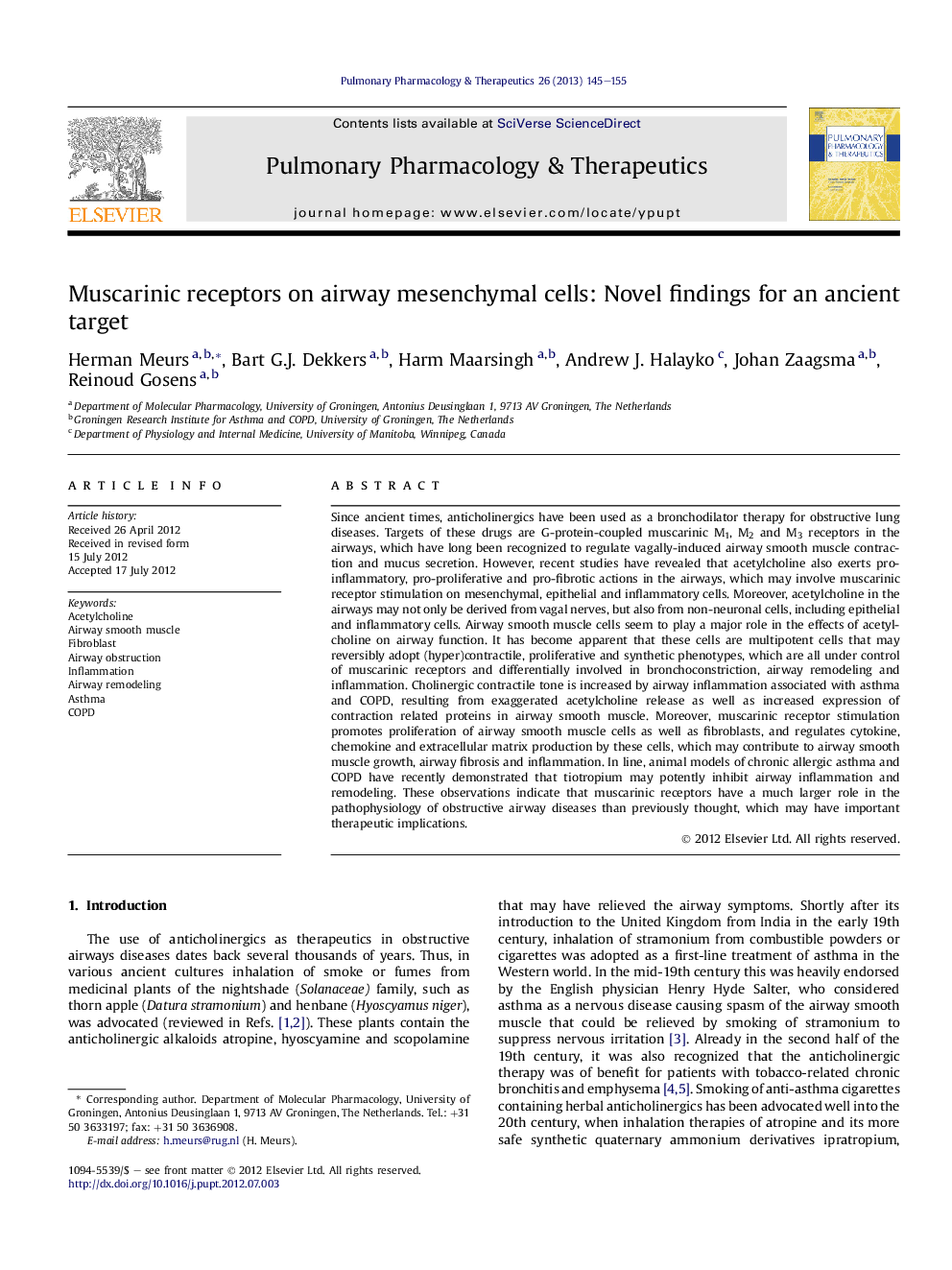| Article ID | Journal | Published Year | Pages | File Type |
|---|---|---|---|---|
| 2567342 | Pulmonary Pharmacology & Therapeutics | 2013 | 11 Pages |
Since ancient times, anticholinergics have been used as a bronchodilator therapy for obstructive lung diseases. Targets of these drugs are G-protein-coupled muscarinic M1, M2 and M3 receptors in the airways, which have long been recognized to regulate vagally-induced airway smooth muscle contraction and mucus secretion. However, recent studies have revealed that acetylcholine also exerts pro-inflammatory, pro-proliferative and pro-fibrotic actions in the airways, which may involve muscarinic receptor stimulation on mesenchymal, epithelial and inflammatory cells. Moreover, acetylcholine in the airways may not only be derived from vagal nerves, but also from non-neuronal cells, including epithelial and inflammatory cells. Airway smooth muscle cells seem to play a major role in the effects of acetylcholine on airway function. It has become apparent that these cells are multipotent cells that may reversibly adopt (hyper)contractile, proliferative and synthetic phenotypes, which are all under control of muscarinic receptors and differentially involved in bronchoconstriction, airway remodeling and inflammation. Cholinergic contractile tone is increased by airway inflammation associated with asthma and COPD, resulting from exaggerated acetylcholine release as well as increased expression of contraction related proteins in airway smooth muscle. Moreover, muscarinic receptor stimulation promotes proliferation of airway smooth muscle cells as well as fibroblasts, and regulates cytokine, chemokine and extracellular matrix production by these cells, which may contribute to airway smooth muscle growth, airway fibrosis and inflammation. In line, animal models of chronic allergic asthma and COPD have recently demonstrated that tiotropium may potently inhibit airway inflammation and remodeling. These observations indicate that muscarinic receptors have a much larger role in the pathophysiology of obstructive airway diseases than previously thought, which may have important therapeutic implications.
